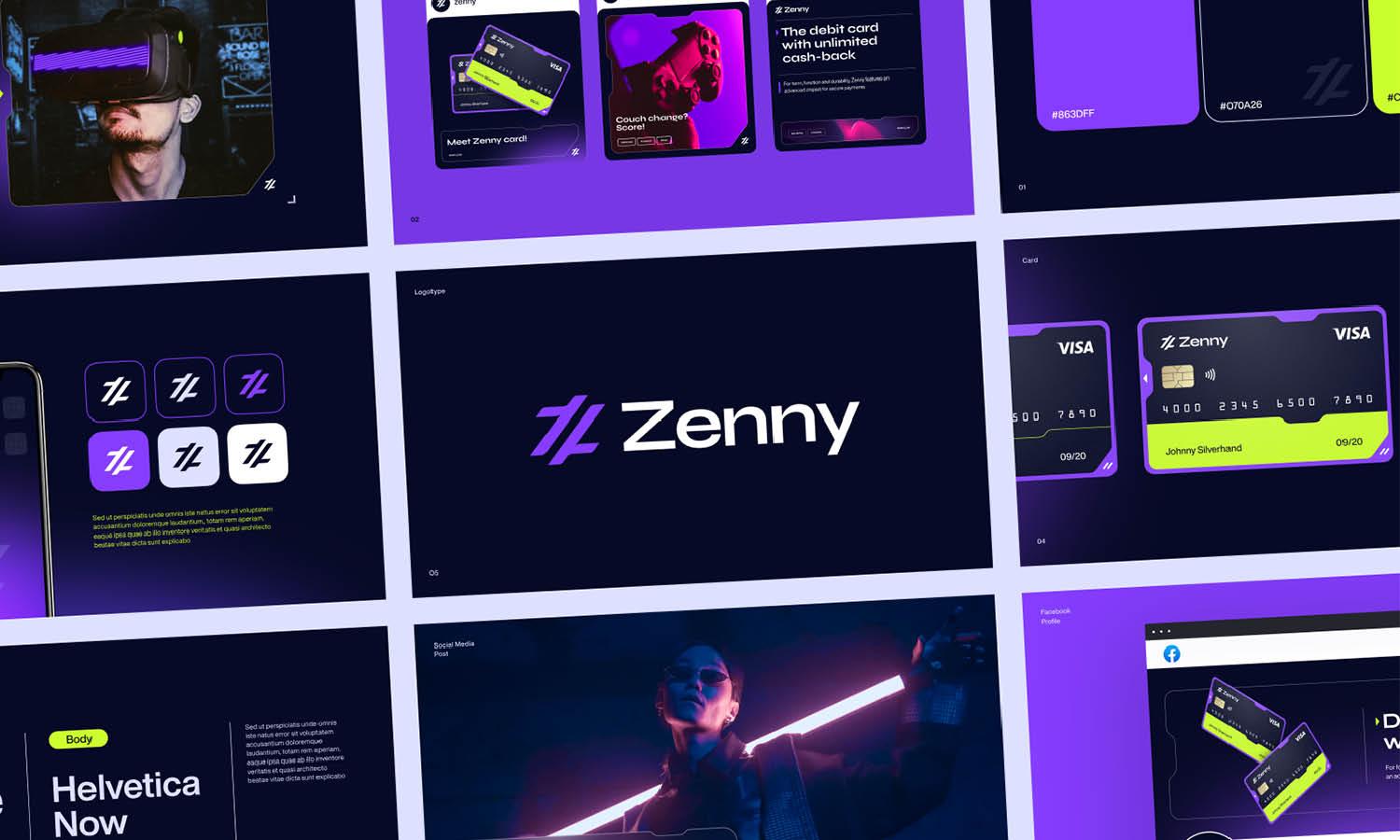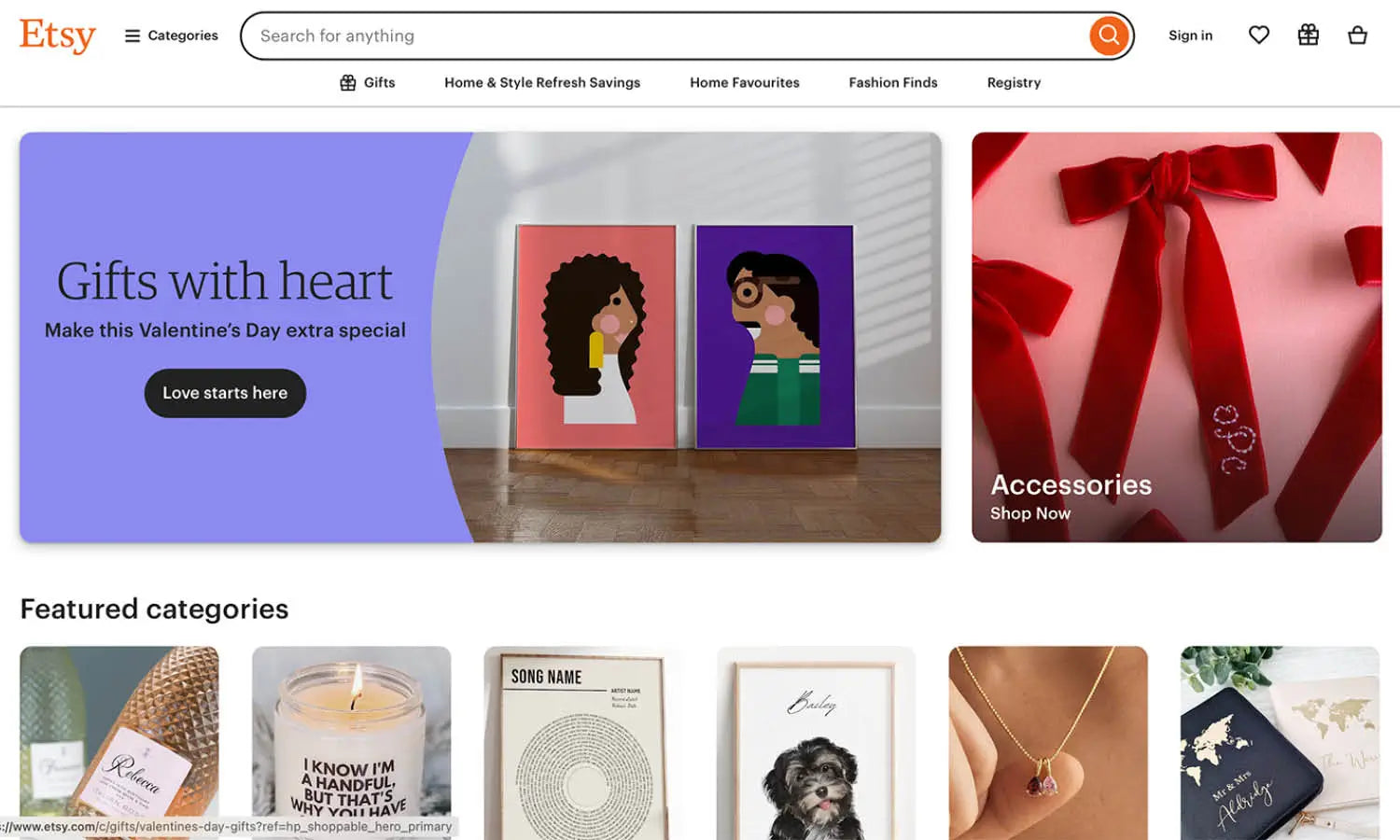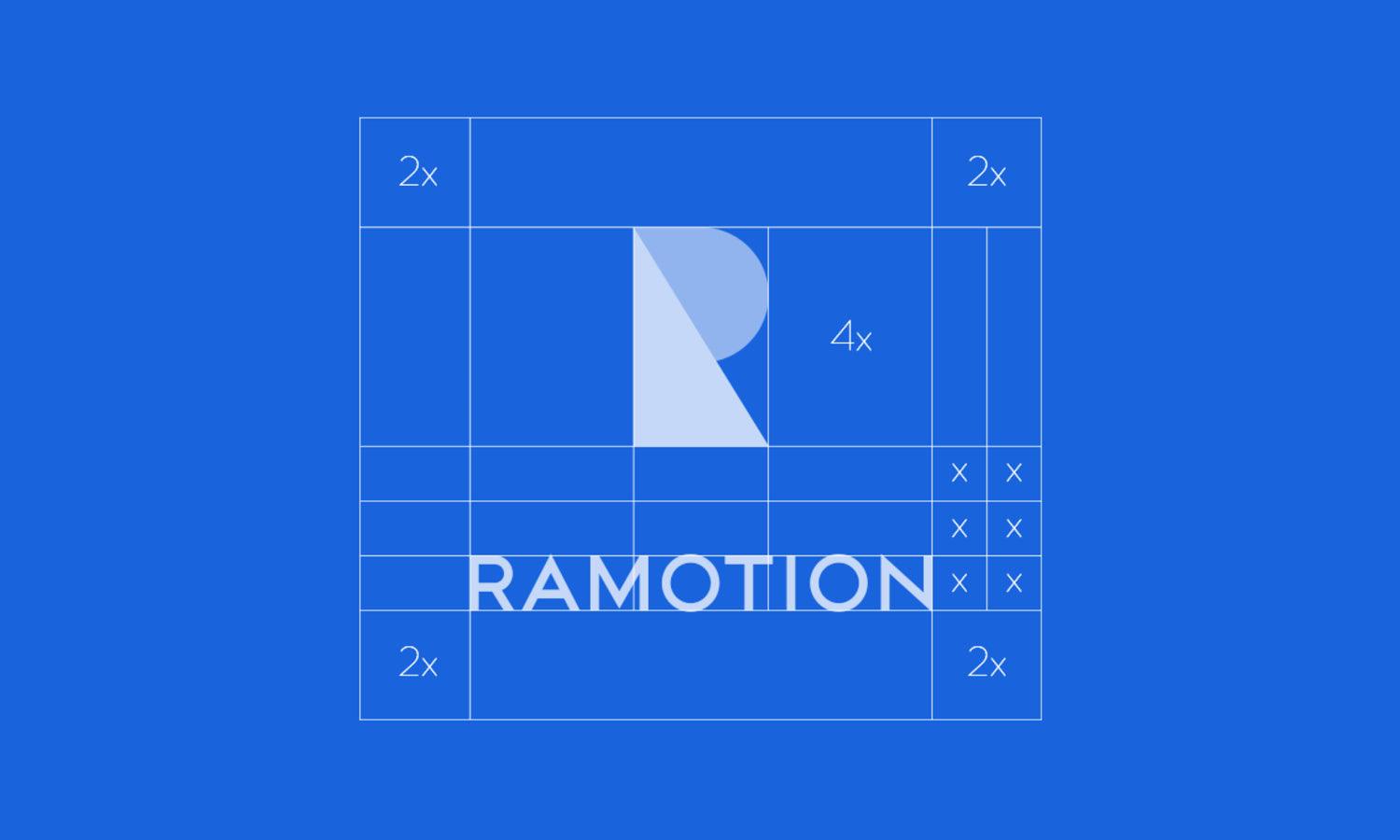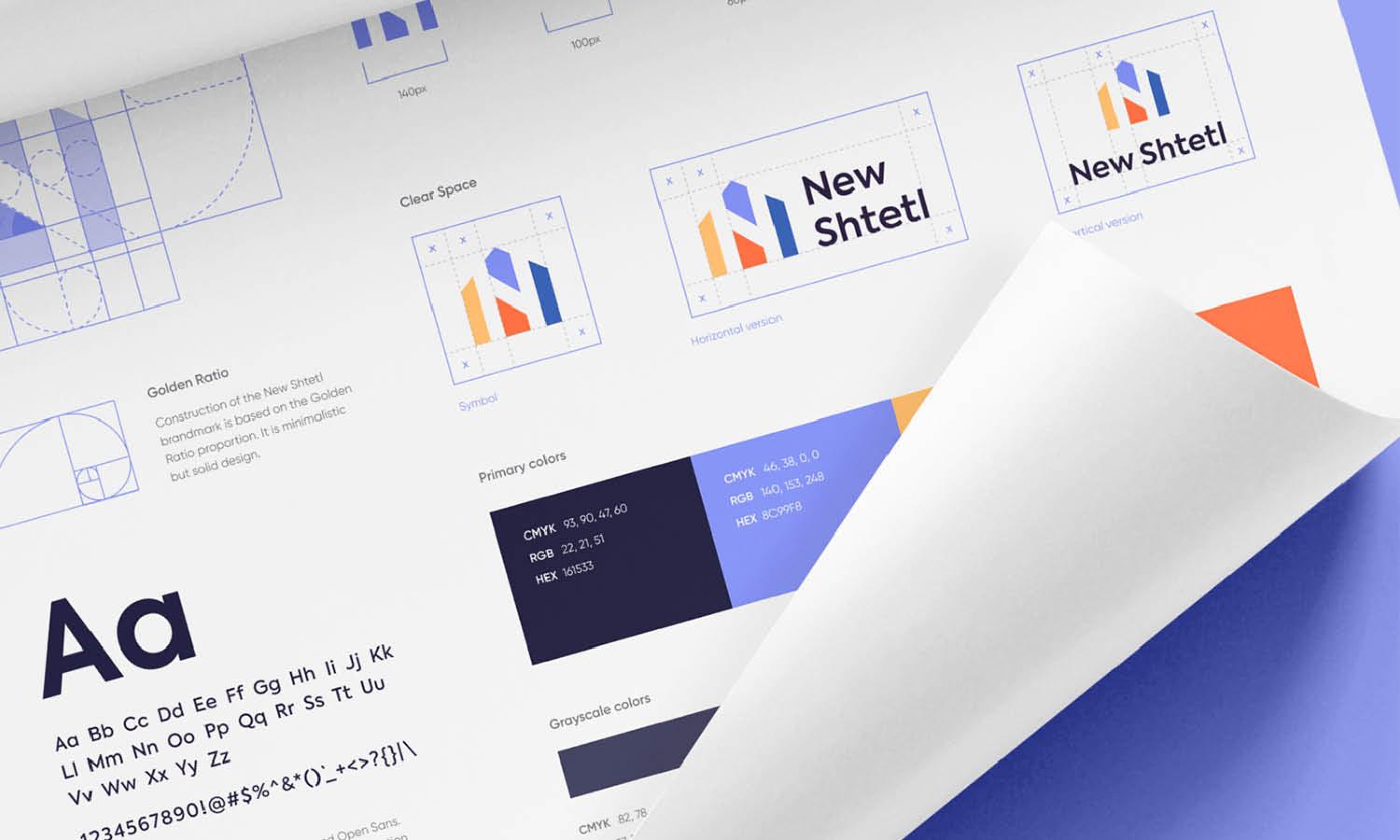Logo Design: The Complete Insights & Information (2025 Update)

What is Logo Design
Logo design is the process of creating a unique visual symbol or mark that represents a brand or company. The logo is often the first thing a customer sees when they come into contact with a business, and it is a powerful tool for building brand recognition and loyalty. A well-designed logo can communicate a company's values, mission, and personality, and it can serve as a visual shorthand for the brand.
The process of logo design typically begins with research and brainstorming. The designer will gather information about the company, its target audience, and its competitors and will use this information to generate ideas for the logo. The next step is typically sketching and refinement, where the designer will create rough drafts of the logo and then refine and polish the design.
Once the logo is complete, it is presented to the client for feedback and revisions. The final logo is then formatted and prepared for use in various mediums such as business cards, brochures, packaging, billboards, and websites.
The best logos are simple, memorable, and versatile. A simple logo is easy to recognize and understand, and it is less likely to become dated. A memorable logo is one that sticks in people's minds, and a versatile logo is one that can be used in a variety of contexts.
Related Articles
- 100+ Collections of the Best Logo Design Ideas (2024 Update)
- The Most Updated Logo Design Trends in 2024
- Complete Guide: Perfect Logo Design Size & Dimension
- Complete Guide: Perfect Logo Design Size & Dimension
- Complete Guide: Prepare Logo Designs For Prints
- Complete Guide: Redesign A Logo Successfuly
- Complete Guide: Logo Design Grid System

Created by VORONOI | https://dribbble.com/shots/15683276-Mobius-Logo-Concept
The Elements of Logo Design
A well-designed logo can help establish brand recognition and create a memorable visual identity for a company. In order to reach those purposes, let's find out the key elements of logo design and how they can be used to create a successful logo.
1. Typography
One of the most important elements of logo design is typography. The font used in a logo can greatly impact the overall look and feel of the design. Choosing a font that is easy to read and appropriate for the industry is crucial. For example, a more formal font may be more appropriate for a law firm, while a more playful font may be better suited for a children's toy company.
2. Color
Another important element of logo design is color. The colors used in a logo can convey different meanings and emotions. For example, red can evoke feelings of energy and excitement, while blue can evoke feelings of trust and reliability. It's important to choose colors that align with the company's brand and message. Additionally, it's important to ensure that the logo looks good in black and white, as it may be used in various mediums where color is not an option.
3. Shape & Form
Shape and form are also important elements of logo design. The shape and form of a logo can be used to create visual interest and help the logo stand out. For example, a circular shape may be more appropriate for a company that specializes in eco-friendly products, while a square shape may be more appropriate for a technology company. Additionally, the use of negative space and geometric shapes can also add depth and meaning to a logo design.
4. Symbolism
Another key element of logo design is symbolism. A symbol or icon can be used to represent the company or its products or services. A symbol can also be used to create a visual metaphor for the company's message. For example, a bird symbol may be used for a company that specializes in air travel, or a tree symbol may be used for a company that specializes in environmentally friendly products.
5. Simplicity
Finally, it's important to remember that simplicity is key when it comes to logo design. A logo that is too busy or cluttered can be difficult to read and remember. It's important to keep the design simple and easy to understand while still making sure it stands out and is memorable.
The key elements of logo design, including typography, color, shape and form, symbolism, and simplicity, can be used to create a successful logo that establishes brand recognition and creates a memorable visual identity for a company. By considering these elements and keeping them in mind during the design process, you can create a logo that effectively represents your company and resonates with your target audience.
Related Articles:
- Complete Guide: Incorporate Key Elements Into Logo Designs
- How to Choose the Right Shapes for Your Logo Design
- How To Pick A Symbol For Your Logo Design
- Complete Guide: Choose The Correct Colour For Logo Designs
- Dos and Don'ts of Using A Logo Slogan

Created by Tatiana Gorbenko | https://www.behance.net/gallery/161502529/PAPATYA-CLOTHING-BRAND
Logo Design Process
The logo design process can be a complex and time-consuming endeavor, but it is important to invest the time and effort to create a logo that accurately represents the company and resonates with its target audience.
1. Consult
The logo design process typically begins with a consultation with the client to understand their business, target audience, and overall design goals. This initial consultation is a key step in the process as it helps the designer gain a deep understanding of the company and its values, which will inform the design of the logo.
2. Research
Once the designer has a clear understanding of the client's needs and goals, they will begin the research and conceptualization phase of the process. This step involves researching the client's competitors, industry trends, and the target audience's preferences. This research is crucial in helping the designer to develop concepts that are both unique and relevant to the client's business.
3. Present
After the research and conceptualization phase, the designer will present a number of logo concepts to the client for feedback. The designer will take into account the client's feedback and make revisions as necessary to refine the logo design. This process of presenting concepts, receiving feedback and making revisions may be repeated multiple times until the client is satisfied with the final design.
4. Production
Once the client has approved the final design, the designer will prepare the logo for production. This may include creating different versions of the logo for different uses (such as web, print, and social media), as well as providing the client with the necessary files and formats for the logo.
5. Review
It is important to note that logo design is not a one-time process, and a company may require to update its logo over time to keep up with the changing times and trends. Regularly reviewing the company's visual identity, including the logo, can help to ensure that it continues to accurately represent the company and resonate with its target audience.
The final design should be unique, relevant, and accurately represent the company. A well-designed logo can help to establish a company's reputation and make it easily recognizable to its target audience. However, it's a good idea to regularly review the company's visual identity, including its logo, to ensure that it stays relevant and up-to-date with the changing trends.
Related Articles:
- 8 Logo Design Basics That Designers Must Follow
- 10 Ways to Produce a Good Logo Design Concept
- How to Create a Good Logo Design Proposal
- How to Create A Logo Design from Scratch
- 10 Tips To Create A Proper Contract for A Logo Design Project

Created by Ramotion | https://dribbble.com/shots/20164862-Atopa-Logotype-Branding-logo-design-logotype-visual-identity
Logo Design Variations
Logo design variations refer to different versions or iterations of a company's logo. These variations can include changes in color, typography, layout, and imagery. The purpose of creating variations of a logo is to make the logo more versatile and usable in different contexts, such as on different backgrounds, in different sizes, or in different formats.
1. Layout
One common variation is a horizontal layout version of the logo for use on websites, business cards, and other horizontal applications. Another variation is a vertical layout version of the logo for use on letterhead, brochures, and other vertical applications.
2. Color
Another variation is the use of different colors in a logo. A company may have a primary color version of its logo for use on its website and marketing materials and a secondary color version of the logo for use on merchandise and other products.
3. Typography
The next variation is the use of different typography in a logo. A company may have a serif font version of its logo for use on traditional marketing materials and a sans-serif font version of the logo for use on digital platforms.
4. Imagery
The next variation is the use of different imagery in a logo. A company may have a photographic version of its logo for use on its website and a simplified graphic version of the logo for use on merchandise and other products.
5. Format
Another variation is the use of different file formats for a logo. A company may have a vector version of its logo for use in print materials and a raster version of the logo for use on digital platforms.

Created by Alen Pavlovic | https://dribbble.com/shots/18617622-WVN-Logotype
Creating variations of a logo is an important part of the logo design process. It allows a company to use its logo in a variety of contexts and ensures that the logo will be legible and recognizable no matter where it is used.
In addition to variations of the logo, it is also important to create guidelines for the use of the logo. These guidelines should include information on the proper colors, typography, and imagery to use with the logo, as well as information on the minimum size at which the logo should be used.
Creating variations of a logo and guidelines for the use of the logo is important not only for the company's branding but also for the consistency of the branding. It ensures that the company's visual identity is consistent across all platforms and mediums and that the company's message is communicated clearly to its target audience.
Related Articles:
- How Many Logo Variations Every Brand Should Have
- 7 Types of Logos & How to Use Each One of Them
- 4 Logo Variations Every Business & Brand Must Need
- Basic Introduction to a Responsive Logo Design
- How To Choose The Right Logo File Format
Become a Professional Logo Designer
Becoming a professional logo designer requires a combination of education, experience, and a strong portfolio. Here are some steps you can take to become a professional logo designer:
1. Education
The first step to becoming a professional logo designer is to gain a strong foundation in design principles. This can be done by obtaining a degree in graphic design or taking relevant classes and workshops that focus on logo design.
2. Develop your design skills
Practice is crucial in becoming a professional logo designer. You should develop your skills in software such as Adobe Illustrator and Photoshop and become proficient in using design tools like vector art and typography. You can practice your skills by working on personal projects and experimenting with different design techniques.
3. Build a portfolio
A portfolio is a collection of your best work that showcases your design skills and your ability to create effective logos. Your portfolio should include a variety of logo designs that you've created, along with information about the design process and the goals of each project.
4. Network
Building relationships with other professionals in the design industry is important for becoming a professional logo designer. Attend design events, join design groups and communities, and connect with other designers on social media. Networking can help you learn about new design trends, as well as provide opportunities for collaboration and job leads.
5. Get experience
Gaining real-world experience is an important step in becoming a professional logo designer. Look for internships or freelance opportunities where you can work on real projects and gain experience working with clients.

Created by VASK® Studio | https://dribbble.com/shots/20468539-BLEND-Brand-Identity
6. Specialize in a niche
Specializing in a specific area of logo design can help you to stand out in the job market and attract clients who are looking for a designer with specific expertise. For example, you could specialize in creating logos for tech startups or in creating eco-friendly logos.
7. Stay informed
To be a successful professional logo designer, you need to stay current with design trends and techniques. This means staying informed about the latest design software and tools, as well as keeping up with new design trends. You can do this by reading design blogs and publications, attending design events, and participating in online design communities.
8. Be open to feedback
Feedback is an important part of the design process, and it's essential to be open to constructive criticism. This will help you to improve your design skills and create more effective logos.
9. Keep learning
The design industry is constantly evolving, and it's important to keep learning and growing as a designer. Look for opportunities to take classes and workshops, and stay informed about new design trends and techniques.
10. Build a professional website
A professional website is a must-have for every designer. A website is a great way to showcase your portfolio and reach a wider audience. It's also a great way to connect with potential clients and keep them informed about your latest work.

Created by Sergei Mase | https://dribbble.com/shots/18953762-Personal-Web-Concept
Becoming a professional logo designer takes time and effort, but by following these steps, you can develop the skills and experience you need to succeed in the field. It's important to be passionate about design and have a clear understanding of design principles, typography, and color theory, and also be able to work with clients and get their feedback and make necessary changes. Additionally, building a strong portfolio and networking with other professionals in the industry can help you to gain the recognition you need to establish yourself as a professional logo designer.
Related Articles:
- 5 Key Requirements To Be A Professional Logo Designer
- How to Learn Logo Design for Free
- 15 Main Principles That Logo Designers Should Know
- 10 Most Famous Logo Designers Of All Time
- The Art History of Logo Design
Earn Money As A Logo Designer
As a logo designer, there are several ways to earn money and make a career out of your design skills. Logo design is an essential aspect of branding and marketing for businesses, and there is always a demand for professional and high-quality logo designs. In this article, we will explore some of the ways in which logo designers can earn money, including working as a freelancer, starting a design agency, and selling on marketplaces. Here are some of the best options:
1. Freelancing
One of the most popular ways to earn money as a logo designer is to work as a freelancer. This allows you to set your own rates, work on your own schedule, and take on projects from clients all over the world. You can find freelancing opportunities on platforms such as Upwork, Freelancer, and Fiverr.
2. Working for a design agency
Another option for logo designers is to work for a design agency. This can be a great way to gain experience, work on a variety of projects, and earn a steady income. However, keep in mind that working for an agency may come with more structure and less creative freedom than freelancing.
3. Starting your own business
If you have the skills, experience, and drive, starting your own logo design business can be a great way to earn money. This allows you to set your own rates, work on your own schedule, and take on clients that align with your personal brand and values.
4. Selling logo designs on stock marketplaces
Another way to earn money as a logo designer is to sell your designs on stock marketplaces such as Shutterstock and iStock. These platforms allow you to upload your designs and earn money every time they are downloaded or used by a client.
5. Participating in design contests
Design contests are another way for logo designers to earn money. These contests are often held by businesses or organizations that are looking for a new logo and are willing to pay for the winning design.

Created by Amit | https://dribbble.com/shots/20632207-H-letter-Howel-branding-modern-logo
To be successful as a logo designer, it is important to have a strong portfolio that showcases your skills and experience. You should also be able to communicate effectively with clients and understand their needs and goals for their logos. And lastly, be able to develop a strong branding strategy for the clients.
In addition, it's important to stay up-to-date on the latest design trends and technologies and to continue to build your skills and knowledge in the field. Networking with other designers and building relationships with clients can also help you to grow your business and earn more money as a logo designer.
Ultimately, the key to earning money as a logo designer is to be passionate about your work, be willing to put in the time and effort to build your skills and your business and be persistent in your efforts to find and retain clients.
Related Articles:
- How Much Earning Can You Get As A Logo Designer
- How to Price Logo Design Reasonably
- How to Invoice Your Client as a Logo Designer
- Start Selling Your Logo Designs Online & Earn More Income
Logo Design Tools & Software
Logo design is an essential aspect of branding and marketing for businesses, and there are a wide variety of tools and software available to assist in the design process. These tools range from basic design software to more advanced tools that offer a wide range of features and capabilities. In this article, we will explore some of the most popular logo design tools and software and discuss their features and capabilities.
1. Adobe Illustrator
One of the most popular logo design tools is Adobe Illustrator. Illustrator is a vector-based design software that allows designers to create logos that are scalable and can be used in a variety of different formats. Illustrator offers a wide range of features, including the ability to work with vector art, create custom shapes and typography, and apply various effects and filters. Illustrator also has a large user community, and there are many resources available to help designers learn how to use the software.
2. Adobe Photoshop
Another popular logo design tool is Adobe Photoshop. Photoshop is a raster-based design software that is commonly used for photo editing and graphic design. Photoshop offers a wide range of features, including the ability to work with layers, apply filters and effects, and create custom shapes and typography. Photoshop also has a large user community and many resources available to help designers learn how to use the software.
3. Inkspace
Inkscape is a free and open-source vector graphics editor that can be used to create logos. It is similar to Adobe Illustrator, but it is free and runs on Windows, Mac, and Linux. Inkscape offers a wide range of features, including the ability to work with vector art, create custom shapes, and apply various effects and filters. It is a great option for those who want a powerful vector editor without the cost of Illustrator.

Source: https://www.adobe.com/id_id/products/illustrator.html
4. Gimp
GIMP is another free and open-source raster graphics editor that can be used to create logos. It is similar to Adobe Photoshop, but it is free and runs on Windows, Mac, and Linux. GIMP offers a wide range of features, including the ability to work with layers, apply filters and effects, and create custom shapes and typography. It is a great option for those who want a powerful raster editor without the cost of Photoshop.
5. Canva
Canva is a graphic design tool that can be used to create logos, as well as other types of designs. It offers a wide range of features, including the ability to work with pre-designed templates, apply filters and effects, and create custom shapes and typography. Canva is also user-friendly and easy to use, making it a great option for businesses and individuals who want to create designs without any design experience.
6. Sketch
Another popular logo design tool is Sketch. The sketch is a vector-based design software that is specifically designed for interface and user experience design. Sketch offers a wide range of features, including the ability to work with vector art, create custom shapes and typography, and apply various effects and filters. Sketch also has a large user community, and there are many resources available to help designers learn how to use the software.

Source: https://www.canva.com/en/
These software are some of the most popular logo design tools. Each of these tools offers a unique set of features and capabilities, and it is important to choose the one that best suits the specific needs of the project. Additionally, there are many online tutorials, blogs, and communities available to help designers learn how to use these tools.
Related Articles:
- 10 Best Logo Design Software That Designers Must Use
- 10 Best Free Online Platform To Create A Logo Design
- 10 Best Recommended Android Apps for Logo Design
- 10 Best Recommended IOS Apps for Logo Design
- 10 Best Recommended Web Apps for Logo Design
Logo Design Copyrights
Copyright law is an important aspect of logo design, as it protects the original work of the designer from being used or copied without permission. When creating a logo, it is important to understand the basics of copyright law and how it applies to the logo design process.
The first step in protecting a logo under copyright law is to establish that it is an original work of authorship. To be considered original, a logo must be created by the designer and not be a copy of another logo or design. A logo that is created from scratch, or is an original adaptation of an existing logo, would likely be considered original.
Once the logo is established as an original work of authorship, the designer automatically owns the copyright to the logo. This means that the designer has the exclusive right to reproduce, distribute, and display the logo. They also have the right to create derivatives of the logo and to license the logo to others for a fee.

Created by Focus Lab | https://dribbble.com/shots/18258432-Wise-Wordmarks
However, it is important to note that copyright does not protect certain elements of a logo such as common shapes, simple typography, or common graphic elements. Additionally, if a logo is created as a work-for-hire, the copyright would belong to the company or person who commissioned the work, rather than the designer.
Another important aspect of copyright law to consider is the use of pre-existing elements in the logo. If a logo includes elements that are already in the public domain, such as a common symbol or image, the designer must have permission to use it or make sure that the use of this element is considered as fair use.
Another aspect of copyright law to consider is the registration of the logo with the United States Copyright Office. While registration is not required for copyright protection, it provides additional benefits such as the ability to sue for copyright infringement and to seek statutory damages.
When it comes to transferring the ownership of the logo, it is important to have a written agreement in place that clearly outlines the terms of the transfer. This agreement should specify whether the transfer is an exclusive or non-exclusive license and should also include any limitations on the use of the logo.

Created by Obrazur Brands | https://www.behance.net/gallery/159079573/Kelarc
It is essential for designers to understand the basics of copyright law and how it applies to the logo design process. Copyright protects original works of authorship, including logos, and gives the designer exclusive rights to reproduce, distribute, and display the logo. Additionally, when creating a logo it's important to be aware of pre-existing elements in the logo and to seek permission when necessary. It is also recommended to register the logo with the United States Copyright Office for additional benefits. And finally, when transferring ownership of the logo, it's important to have a written agreement in place that clearly outlines the terms of the transfer.
Related Articles:
- 10 Reasons Why You Should Copyright Your Logo
- Best Recommended Actions If Someone Copied Your Logo Design
- Here's What You Need To Know About Logo Theft
- How to Trademark a Logo Design & Protect Your Brand
- How To Check If Your Logo Is Unique & Unused
Good Logo Design, Good Businesses
A logo is a symbol or design that represents a company or organization. It is one of the most important elements of a company's branding and is often the first thing that customers see when they come into contact with a business. A well-designed logo can help to establish a strong brand identity and make a lasting impression on customers. In this article, we will explore the process of logo design for businesses and the key considerations that should be taken into account when creating a logo.
The first step in the logo design process is to understand the company's values, mission, and target audience. This will help to inform the overall look and feel of the logo. For example, a financial services company may want a logo that is professional and conservative, while a children's toy company may want a logo that is colorful and playful.
Next, consider the different types of logos that are available. There are several different types of logos, including wordmarks, lettermarks, and pictorial marks. Wordmarks are logos that are made up of a company's name, such as Coca-Cola or IBM. Lettermarks are logos that are made up of the company's initials, such as NASA or HBO. Pictorial marks are logos that are made up of a symbol or image, such as the Nike swoosh or the Apple apple.

Created by Amr Bo Shanab | https://www.behance.net/gallery/154115979/iblink
Another key consideration is color. Color plays a significant role in the design of a logo and can help to convey a company's values and message. For example, blue is often associated with trust and reliability, while green is associated with growth and health. It is important to choose colors that are appropriate for the company and its target audience.
The typography used in the logo is also important. The typeface should be legible and easy to read, and should be consistent with the overall style of the logo. It is important to avoid using too many different typefaces, as this can make the logo look cluttered and confusing.
In addition to these design elements, it is also important to consider the different ways in which the logo will be used. A logo needs to be versatile and should be able to be used in a variety of different formats, including print and digital. This means that it should be able to be used in different sizes, colors, and backgrounds.
Finally, it is important to work with a professional logo designer or design agency. A professional designer will have the experience and expertise needed to create a logo that is effective and impactful. They will also be able to work with the client to ensure that the logo meets their specific needs and represents their company in the best way possible.

Created by VASK® Studio | https://dribbble.com/shots/18048925-mether-Brand-Identity
A well-designed logo can help to establish a strong brand identity and make a lasting impression on customers. When creating a logo, it is important to consider the company's values, mission, and target audience, as well as the different types of logos available, the role of color, typography, and the different ways in which the logo will be used. Working with a professional logo designer or design agency is also essential to ensure that the logo is effective and impactful.
Related Articles:
- Here’s Why Good Logo Design Is Good For Business
- 10 Reasons Why Huge Companies Should Invest in A Good Logo Design
- 10 Reasons Why Small Business Should Invest in A Logo Design
- How Much Does A Logo Design Cost?
Hire A Logo Designer
Hiring a logo designer is an important decision for any business or organization looking to establish a strong brand identity. A well-designed logo can help to make a lasting impression on customers and establish a strong brand image. However, finding the right logo designer can be a daunting task, as there are many factors to consider and questions to ask. In this article, we will explore the process of hiring a logo designer and the key considerations that should be taken into account.
The first step in the process of hiring a logo designer is to determine the scope of the project. This includes determining the specific needs of the business or organization, the target audience, and the overall style and look of the logo. This information can be used to create a brief for the designer that outlines the specific requirements for the logo.
Once the scope of the project has been determined, it is important to research different designers and design agencies. This can be done by searching online for designers and agencies, looking at portfolios of previous work, and reading reviews and testimonials. It is also a good idea to ask for references and to speak with previous clients to get an idea of the designer's work and the level of service they provide.

Created by Ted Kulakevich | https://dribbble.com/shots/16320149-Behind-The-Scenes
When it comes to the actual hiring process, it is important to have a clear understanding of the designer's qualifications and experience. This includes looking at their portfolio of previous work, their education and training, and their professional experience. It is also important to ask about their design process and the tools and software they use.
Another important consideration is the designer's availability and turnaround time. It is important to determine if the designer is available to start the project immediately and if they can meet the timeframe for completion. It is also important to discuss the designer's communication style and availability for meetings and updates throughout the project.
It is also important to discuss the budget for the project and to get an estimate for the total cost. It is a good idea to get a detailed breakdown of the costs for the project and to make sure that the designer's fees are reasonable and in line with industry standards.
Finally, when it comes to working with the designer, it is important to have a clear understanding of the ownership and usage rights of the logo. This includes discussing who owns the copyright of the logo and the terms of usage, including any restrictions on the use of the logo. It is also important to have a written agreement in place that outlines the specific terms and conditions of the project.

Created by Ramotion | https://dribbble.com/shots/20203959-FLYR-Logotype-Branding-logo-design-logotype-visual-identity
Hiring a logo designer is an important decision for any business or organization looking to establish a strong brand identity. The process of hiring a logo designer involves determining the scope of the project, researching different designers and design agencies, and having a clear understanding of the designer's qualifications, experience, availability and turnaround time, budget, and ownership and usage rights for the logo. By considering these factors and asking the right questions, businesses and organizations can find the right logo designer to create a lasting and impactful logo for their brand.
Related Articles:
- 10 Best Online Platforms To Hire Freelance Logo Designers
- How Much Is The Average Salary Of A Logo Designer
- How to Run Your Own Logo Design Competition
- Write A Perfect Project Description for A Logo Designer
- Top 10 Questions You Need To Ask When Hiring A Logo Designer
FAQs: Logo Design
What is a logo and why is it important for my business?
A logo is a visual representation of a company or brand. It serves as a unique identifier and helps customers identify and remember the business. A well-designed logo can also convey a company's values and mission, and create a sense of trust and credibility.
How do I choose the right colors for my logo?
The colors chosen for a logo can greatly impact how it is perceived. Different colors evoke different emotions and associations. It is important to choose colors that align with the company's values and target audience. It is also important to consider how the logo will be used, as certain colors may not be as legible or visible in certain contexts.
How can I make sure my logo is unique and doesn't infringe on any existing trademarks?
When designing a logo, it is important to research existing logos and trademarks to ensure that your design is unique and doesn't infringe on any existing rights. This can be done by searching the United States Patent and Trademark Office (USPTO) database or hiring a trademark attorney to conduct a search.
How can I ensure that my logo is versatile and can be used across different mediums?
When designing a logo, it is important to consider how it will be used across different mediums such as print, digital, and merchandise. A versatile logo can be easily reproduced at different sizes and in different formats without losing its integrity. It is also important to make sure that the logo works in black and white, as well as color.
How can I make sure my logo is memorable?
A memorable logo is one that is simple, unique, and easily recognizable. It should also be able to convey the company's values and mission. It is also important to consider how the logo will be used in different contexts and how it will be associated with the company's branding.
How much does it cost to design a logo?
The cost of logo design can vary greatly depending on the designer or agency you choose, the complexity of the design, and the level of service required. On average, a logo design can cost anywhere from $50 to $5,000 or more.
How long does it take to design a logo?
The time it takes to design a logo can also vary depending on the designer or agency you choose, the complexity of the design, and the level of service required. On average, a logo design can take anywhere from several hours to several weeks to complete.
How many revisions can I expect during the logo design process?
The number of revisions during the logo design process can vary depending on the designer or agency you choose, the complexity of the design, and the level of service required. On average, a logo design process may include 1-3 rounds of revisions.
Will I receive the original design files after the logo design process is complete?
Yes, after the logo design process is complete, you will typically receive the original design files in a variety of file formats such as .ai, .eps, .png, .jpg and more. These files will allow you to reproduce the logo in different sizes and on different mediums.
Can I use my logo on my website and business cards?
Yes, once the logo design process is complete, you will own the rights to use the logo on your website, business cards, and other marketing materials as per the agreement with the designer or agency.


















Leave a Comment